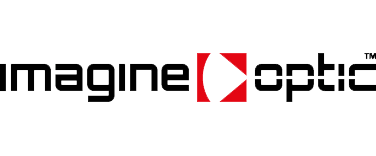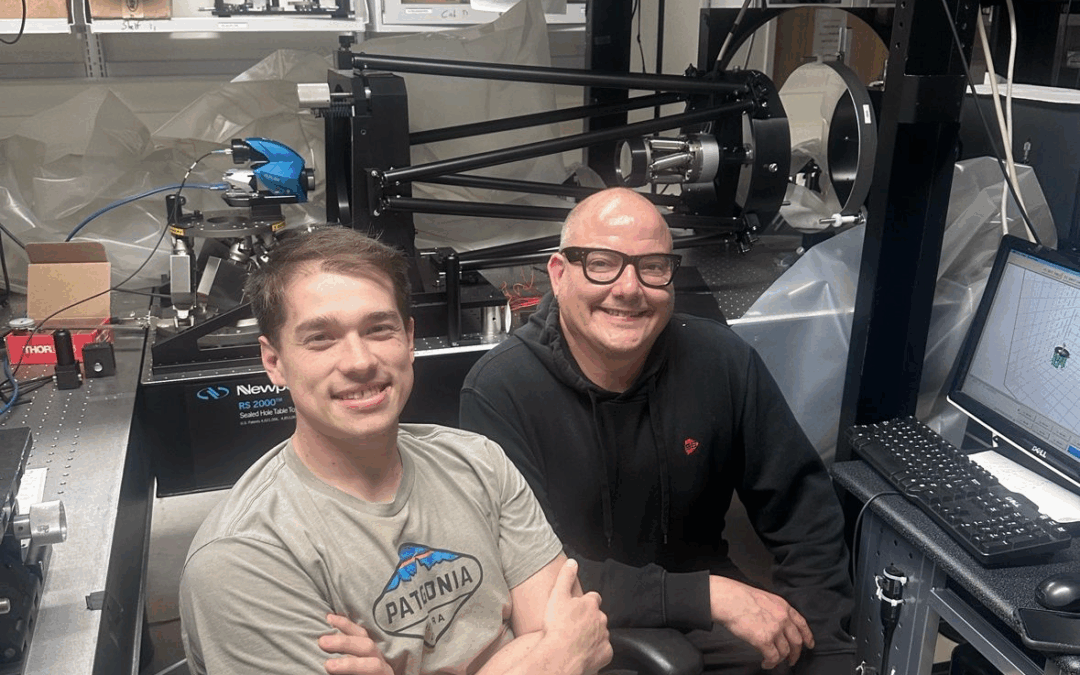Optical Alignment of a Telescope:
Niko (foreground) in the Institute of Optics lab at the University of Rochester and Jerôme Ballesta, optical metrology and adaptive optics sales expert.
After his publication in Optics Express, we interviewed Niko Romer, a PhD student of Jannick Rolland at the University of Rochester about the method he proposes for aligning optical systems.
Meet the author: Niko Romer short CV
With a BS in Astronautical engineering, Niko Romer joined the group of Jannick Rolland in 2021 as a PhD student in optics. Niko is a true passionate of space technologies and has been involved in several projects in collaboration with NASA, Planet or Honeybee Robotics (now part of Blue Origin). He has already published several papers among which: ‘Alignment of a Ritchey-Chrétien telescope with primary mirror figure error guided by the rapid measurement of binodal astigmatism’, Optics Express Vol. 32, Issue 27, pp. 48525-48540 (2024), https://doi.org/10.1364/OE.541050.
Discover Niko’s new optical alignment method: summary of the paper
This article describes a method used for the optical alignment of a Ritchey-Chrétien (RC) telescope, and which can be advantageously extended to free-form systems.
It is based on Nodal Aberration Theory (NAT) invented by R.V. Shack and developed by K.P. Thompson to describe systems without rotational symmetry. NAT predicts asymmetric field dependences for multiple aberration types including third-order astigmatism and in particular a “binodal” behavior in which there are two points in the field of view where astigmatism vanishes. In the case of the alignment of the RC telescope, if the astigmatic figure error on the primary mirror is known and if the two astigmatic nodes are located, it is possible to calculate the secondary mirror misalignment and therefore correct it.
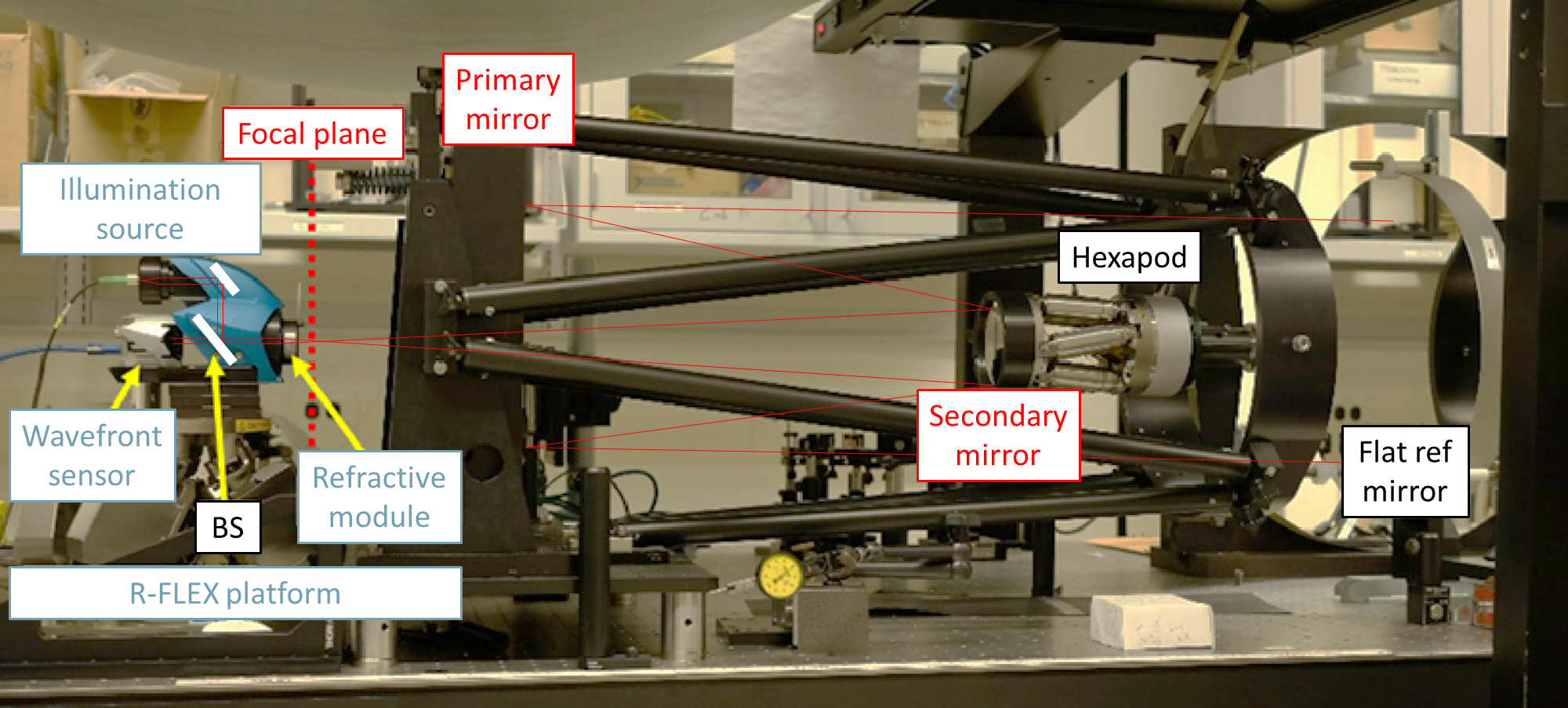
Experimental setup mounted by Niko for the optical alignment of a telescope with a Shack-Hartmann wavefront sensor
A HASO Shack-Hartmann wavefront sensor mounted on a R-FLEX compact-format illumination platform was used to rapidly measure densely sampled full-field displays of the telescope, which has its secondary mirror mounted on a precision hexapod to allow for repeatable control of the telescope alignment.
Experimental results were compared to ray-based simulation with very good consistency.
For more information about the method, read original paper here: https://doi.org/10.1364/OE.541050.
Niko Romer interview
Q: Why did the University of Rochester need an instrument like the R-FLEX?
A: We required a way to measure the wavefront aberrations through the telescope at a grid of different field angles. To do this, we needed an instrument small enough to be translated and tilted at the focal plane in a repeatable manner.
The R-FLEX was a great option for us because it was fully integrated with a light source and small/lightweight enough to be mounted on a hexapod.
Q: Aside from its form factor, were there other features that made you lean toward using it for this project?
A: The convenience provided by having the integrated light source and collimator, and the ability to fine-tune WAVEVIEW wavefront reconstruction algorithm such that it would work over a pupil with a central obscuration and support spiders.
Q: Why the R-FLEX/SH-WFS/Imagine Optic and not another product/technology/company?
A: We made previous attempts to make the measurements on our telescope with another commercial sensor without any success. The R-FLEX/HASO/WAVEVIEW infrastructure enabled us to complete the measurement quickly and efficiently once it was set up.
The engineers at Imagine Optic were extremely enthusiastic and helpful about collaboration on the project!
Q: What do you think of Imagine Optic’s designs? 😉
A: IO’s designs are convenient and easy to understand. The R-FLEX is easy to work with, and the kinematic/magnetic mounts on the HASO make reassembly easy if it is needed.
They are also perhaps the most stylish looking optical instruments I have seen on the market which is also fun.
Q: Finally, are you or your labmates considering using it in a future project?
A: We have discussed developing the automation in the setup used for the telescope measurements.
We love to collaborate with our customers and help them get the most of their applications. We are happy to discuss how our optical metrology solutions such as the OEC® suit your needs. Reach us at sales@imagine-optic.com or through the contact form.
What is a R-FLEX? Optical Alignment
The R-FLEX -part of The OEC® family- is an illumination platform for optical metrology that conveniently combines 3 key blocks: i. a wavefront sensor ii. a light source, and iii. refractive modules of different focal lengths.
The solution is flexible and versatile, as the blocks are easily swapped to adapt: the source wavelength, the module numerical aperture or the sensor resolution. It is easy to use, as alignment and mechanical interface are already taken care of, allowing single- pass or double-pass test configurations to be created in seconds.
The R-FLEX is a compact and lightweight testing solution perfectly suited to the characterization and the optical alignment of a telescope.
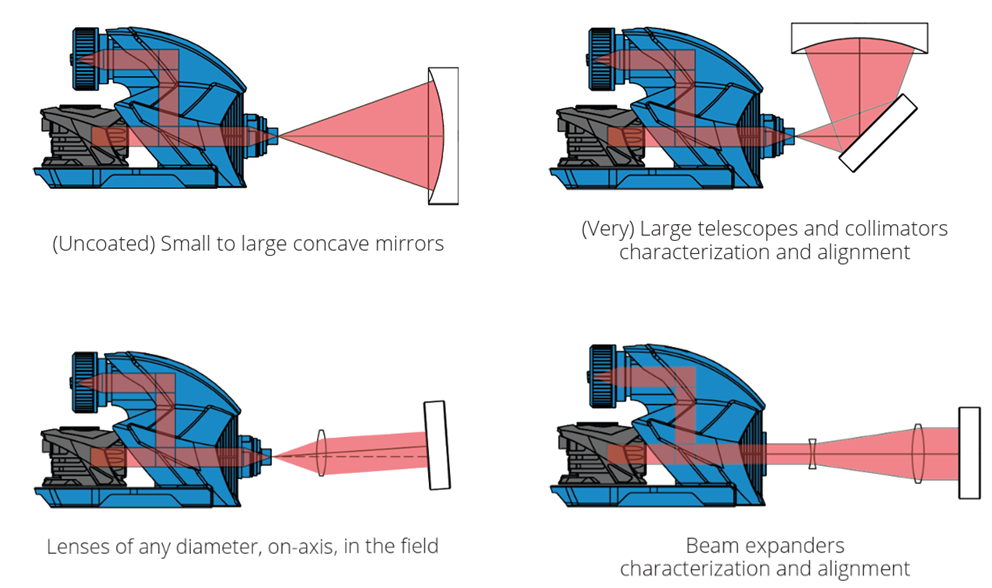
Concave surfaces (top) and refractive optics (bottom) testing and optical alignment with R-FLEX illumination platform
What is a Ritchey-Chrétien telescope?
It is a variant of a Cassegrain telescope, which is a telescope combining a concave primary mirror with a central aperture and a convex secondary mirror folding the optical path into it, where both mirrors present a hyperbolic shape designed to cancel (3rd order) coma and improve field of view. It was invented by the astronomers George Willis Ritchey and Henri Chrétien.
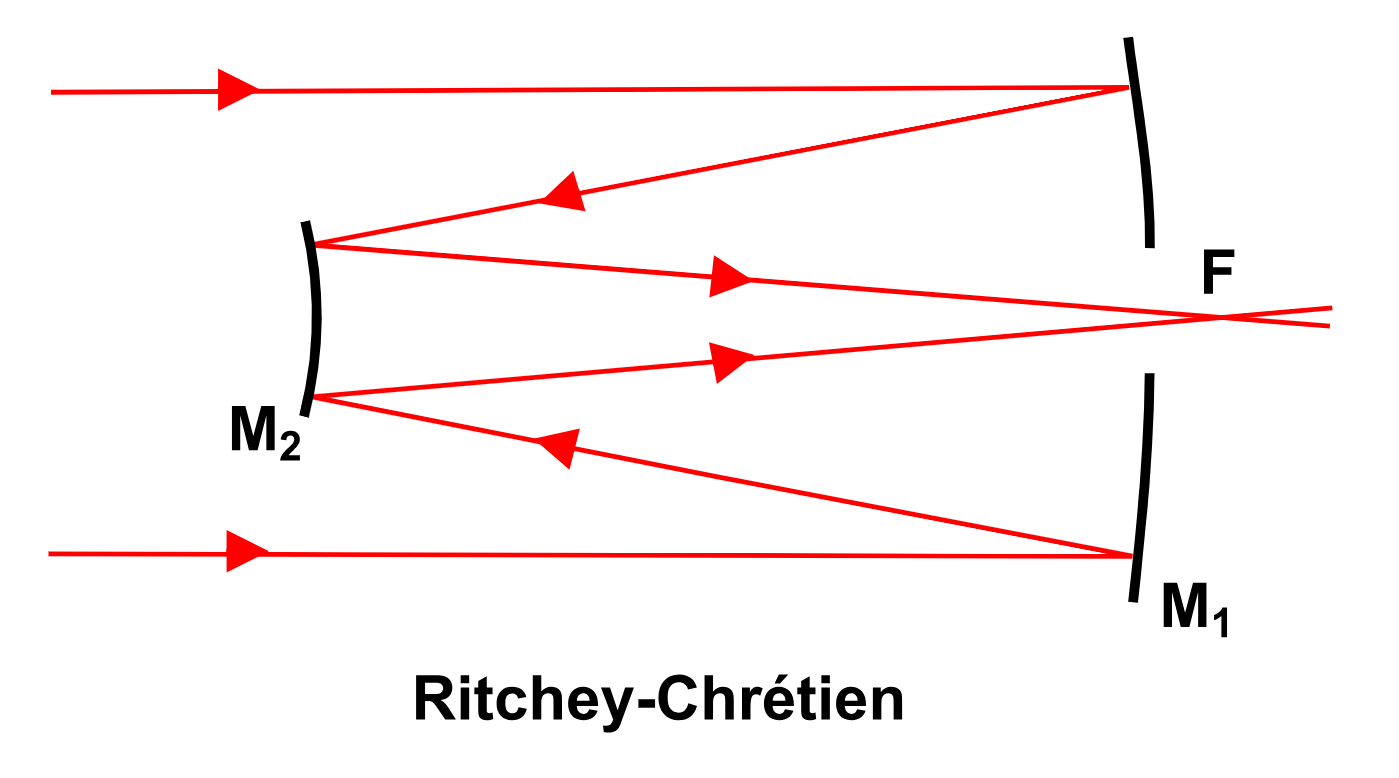
Ritchey-Chrétien telescope ©HHahn
